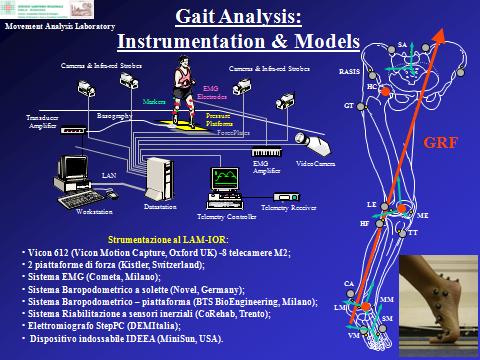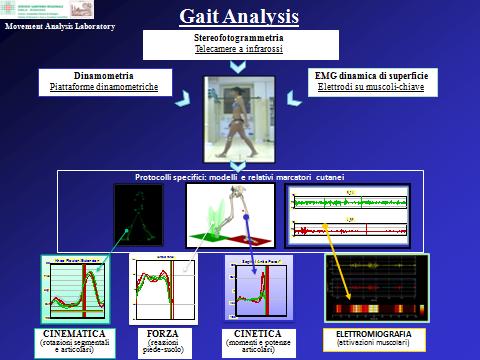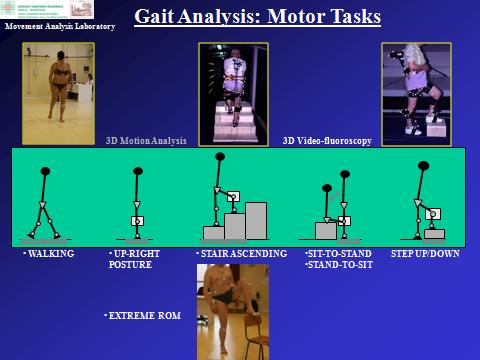Introduction
Keywords: gait analysis, stereophotogrammetry, baropodometry, dynamometry, electromyography, inertial sensors, instrument validation, protocol design, sport/performance, functional recovery, ergonomics, biofeedback, rehabilitation/exercise at home.
The Laboratory uses, designs and tests state-of-the-art technology in the field of "gait analysis". Advanced instruments enable the non-invasive acquisition, during normal tasks of daily living, of the three-dimensional position of small markers attached to the body segments, of the ground reaction force and of the muscular activity, from which kinematics and dynamics of the major joints are calculated. The motor tasks analysed include, but are not limited to: walking, ascent/descent of stairs, sitting/rising from a chair, ascent/descent of a step, squat, lunge, and upper limb reaching. Common lower-limb and upper-limb rehabilitation exercises are also analysed.
The instruments available to the laboratory comprise two stereophotogrammetric systems, for a total of 14 high-frequency cameras, two high-speed video cameras, a 16-channel surface wireless EMG, two force plates, instrumented pressure insoles, a pressure platform, a set of Inertial Measurement Units (IMU), and a foot scanner. Relevant measurements are integrated and synchronized, for consistent and time-synchronized datasets. All analyses are minimally-invasive, and are performed in a short time by experienced staff with no risk associated to the subject.

Novel kinematic protocols and corresponding biomechanical models have been designed by the team of engineers and physiatrists of the Laboratory. Some of these are wide-spread within the scientific and gait-analysis communities, which have appreciated the accuracy, repeatability and interpretability of the relevant motion analysis results, and these protocols have recently become international standards. These techniques have been applied successfully to several parts of the human body, such as the upper limb, the trunk and spine, and the foot, and exploited in a number of pathological and normal/control populations, possibly before and after treatments. These can be surgical, pharmacological, physical, including also orthotics interventions such as joint orthosis, brace, splint, and insole, for ankle, knee, column, shoulder, elbow and wrist.


